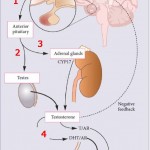Another good week for radical prostatectomy
The SPCG-4 (Bill-Axelson) study updated again in NEJM
 In this week’s edition of the NEJM, Anna Bill-Axelson and the Scandinavian Prostate Cancer Group Study Number 4 (SPCG-4) investigators have written an impressive update to their famous study comparing radical prostatectomy (RP) to watchful waiting (WW) in a setting of mostly clinically detected prostate cancer. In 2002, the group reported in NEJM at a median 8 years of follow-up that RP reduces disease specific mortality, overall mortality, and risk of metastasis and local progression. The declines in prostate cancer specific mortality were 8.6% for RP versus 14.4% for WW. In 2011, they published again with a median 12.8 years of follow-up and the differences were 14.6% versus 20.7%, but the benefit was impressively driven by men under age 65. Now in 2014, the median follow-up time is 13.4 years with up to 23.2 years at the high end, and overall 64% of the cohort has died by end of 2012 — specific to prostate cancer in 17.7% vs. 28.7%. The number needed to treat is 8.
In this week’s edition of the NEJM, Anna Bill-Axelson and the Scandinavian Prostate Cancer Group Study Number 4 (SPCG-4) investigators have written an impressive update to their famous study comparing radical prostatectomy (RP) to watchful waiting (WW) in a setting of mostly clinically detected prostate cancer. In 2002, the group reported in NEJM at a median 8 years of follow-up that RP reduces disease specific mortality, overall mortality, and risk of metastasis and local progression. The declines in prostate cancer specific mortality were 8.6% for RP versus 14.4% for WW. In 2011, they published again with a median 12.8 years of follow-up and the differences were 14.6% versus 20.7%, but the benefit was impressively driven by men under age 65. Now in 2014, the median follow-up time is 13.4 years with up to 23.2 years at the high end, and overall 64% of the cohort has died by end of 2012 — specific to prostate cancer in 17.7% vs. 28.7%. The number needed to treat is 8.
What stands out in the latest edition of this famous trial? Although previous reports describe differences in metastatic and progressive disease in WW, this report nicely shows that RP reduces metastatic disease burden, androgen deprivation therapy, and palliative treatments across all age groups — even if mortality comparisons are still more notable in younger cohorts. So the paper has evolved into a key lesson in the natural history of prostate cancer and localized curative intervention (side debate — this paper is not really about radical prostatectomy itself, but rather intervention, and I would assume many similar benefits possible with radiation approaches). Prostate cancer outcomes are more complex than simple cure fractions. Patients can suffer from relapsed disease, multiple treatments, long-term androgen deprivation, and, yes, actual prostate cancer mortality that apparently takes a committee of experts to decipher from competing sources. I think the impact of the study will be that healthy men between the ages of 65-75 may benefit from treatment of lethal potential prostate cancer — but perhaps as measured by endpoints other than mortality. This is especially relevant with the evolving library of treatment options for castrate resistant prostate cancer — it may take a lot longer to actually die of prostate cancer, but who really wants to spend their last 5-10 years of life heavily medicated compared to a more effective localized intervention at an earlier time? Between earlier versions of this study and the PIVOT trial, I think we already believe in the benefits of curative therapy for men <65 years with intermediate to high-risk disease. On the other end of the spectrum, the paper still supports the concept of active surveillance for low risk cancer, although more is to be learned from other accruing cohorts of patients who will undergo selective delayed intervention.
Overall, I found this to be a highly citable paper with a new set of figures destined for use in many PowerPoint talks to come. The overall message is that RP at the right time and right patient can prevent mortality and disease progression. A comprehensive prostate cancer program should start with such biology-based discussions with patients and then carefully integrate active surveillance in the lower risk end and clinical trials of combination therapy at the higher end. Finally, I wonder if the findings of reduced metastatic events in older patients might re-challenge the screening guidelines that are encouraging less screening after age 70?
John W. Davis, MD
Associate Editor, BJUI




Thanks to Caleb Hellerman from CNN for speaking with me about the study and including my comments in his online article. Here is the link:
https://www.cnn.com/2014/03/05/health/prostate-surgery-study/index.html?hpt=he_c2
It is a great privilege to have Lars Holmberg as a colleague at Guy’s, KCL.
This trial is unique as very few patients are lost to long term follow up.
The message is as clear as it was when the first study was published.
Excellent summary John. Interesting to see some of the reaction from the “anti-PSA” lobby eg https://www.newsdaily.com/health/c58b15d089773e98a014376f8063f236/prostatectomy-cuts-death-risk-mostly-for-younger-men. It is extraordinary how some people will take an RCT (so rare in surgery), undertaken and followed-up with meticulous intent, for such a long period, and turn it into a rant about screening. In any case, although this was a population who presented with urinary symptoms, the point here is that the intervention has tremendous value. it is not about over-diagnosis or over-treatment, it is about the benefit of RP once a diagnosis is made.
My only quibble is with your comment about radiation having “similar benefits”. I think as Sooriakumaran (BMJ 2014) and Sun (BJUI 2014) have demonstrated recently, radiation has a way to go to even be in the ball-park in terms of prostate cancer-specific mortality reduction.
Declan–thanks for the comments–yes I was trying to entice some discussion re: radiation vs surgery. Obviously this study did not include radiated patients. Given that the benefits of surgery in the older cohort were mostly the reduction in metastatic progression, ADT use, and palliation, then we might hypothesize that radiation would perform similarly in this role, and be an appropriate choice for some men, while I would agree that the mortality figures (especially young) would continue to reinforce our ongoing practice pattern for surgery in younger patients with the longest survivorship expectation.
Great summary John. This paper will be the subject of the April’s International Urology Journal Club (#urojc) on twitter. Looking forward to what should be a lively discussion.
On another note, an interesting observation was that when the article first appeared online, there was a well placed Da Vinci advertisement alongside the article – imagine the outrage if it were a drug company whose product was in a positve RCT? It was wise of the NEJM to pull down that advertisement at the first signs of criticism appearing on social media.